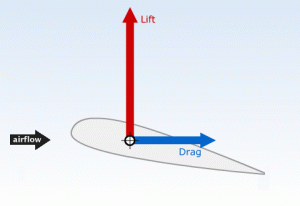 I recently chatted with Mike Harding, innovator and developer, about creating awesome new products and services. I met Mike when we both presented product and service innovation sessions at The 2012 Silicon Valley Product Camp at eBay in March. He has worked with numerous startups ranging from fruit and produce wholesaling to Java application servers. Mike worked to bring software and developers into the networking world at Juniper Networks. His current startup is re.vu, a personal landing page for your professional brand. When not working, Mike loves to spend time with his family on the California coast.
I recently chatted with Mike Harding, innovator and developer, about creating awesome new products and services. I met Mike when we both presented product and service innovation sessions at The 2012 Silicon Valley Product Camp at eBay in March. He has worked with numerous startups ranging from fruit and produce wholesaling to Java application servers. Mike worked to bring software and developers into the networking world at Juniper Networks. His current startup is re.vu, a personal landing page for your professional brand. When not working, Mike loves to spend time with his family on the California coast.
Kathy Klotz-Guest (KKG): Why do companies often get ‘new’ products and services wrong?
Mike Harding (MH): We are brilliant individually and stupid together.
That gets magnified with the size of an organization. Take the size of the human brain and apply that to the number of relationships people can maintain with fidelity. Somewhere after about 100 or so people get involved, you break into multiple tribes. Then you get ‘drag’ applied and ideas stall.
 We are pack animals. Humans want to be part of a pack and improve their positions in the pack. Products are a symptom of that human condition. I am working on a product now and they (the client) are faced with a huge “innovator’s dilemma.” The investment to do this would be less than $10MM. So the question is do we do the same old thing or really break with the past and dare to do something different?
We are pack animals. Humans want to be part of a pack and improve their positions in the pack. Products are a symptom of that human condition. I am working on a product now and they (the client) are faced with a huge “innovator’s dilemma.” The investment to do this would be less than $10MM. So the question is do we do the same old thing or really break with the past and dare to do something different?
KKG: How much does risk-aversion tie our hands creatively when it comes to innovation?
MH: It’s huge, as we both know!
KKG: We build in the wrong incentives and reward the wrong behavior.
MH: Yes. You never see anyone publicly celebrate failure or give positive attention to those who champion failures. Failure is an important teacher!
KKG: Some companies do. Like Intuit. It’s the ‘fail fast and fail forward’ mentality.
MH: Wish there were more companies doing that. I was reading about one of the founders of Pinterest…and Pinterest was a pivot. Big companies don’t like having to pivot. It’s too uncertain. And pivoting – they don’t say failing – is often critical to success. Knowing when to do that is tricky and vital. I asked one of my big company clients how much risk they were willing to take on. There is smart risk and dumb risk. If you don’t understand the risk, maybe it’s a dumb risk. There is a certain amount of risk you can’t plan away; you do have to understand what you are dealing with.
KKG: How can organizations of all sizes go beyond the ‘obvious’ product and service extensions – meaning from mere upgrades to products that push boundaries forward?
MH: Get out from behind your computer. Experience the world without preconceived notions. Go smell a flower. Build paper airplanes and see if they work. Play games. Go bowling. How does the path of the ball change down the lane? Go for a walk. Unplug.
 Don’t be so tethered to your email. This notion that we are increasingly connected; we are abusing it. The most rare thing today isn’t time – it’s our attention. Too much multi-tasking hurts our ability to be inspired and concentrate well on just a few things. Remember that creation is a holistic process. You need to engage in some creative process physically and that helps the mental agility. Doing mindless task frees us to have insights. Frequently breakthroughs happen when you do something out of character enough to get your subconscious to work. It’s the ping pong table effect, and that is why it’s there in so many break rooms, or used to be.
Don’t be so tethered to your email. This notion that we are increasingly connected; we are abusing it. The most rare thing today isn’t time – it’s our attention. Too much multi-tasking hurts our ability to be inspired and concentrate well on just a few things. Remember that creation is a holistic process. You need to engage in some creative process physically and that helps the mental agility. Doing mindless task frees us to have insights. Frequently breakthroughs happen when you do something out of character enough to get your subconscious to work. It’s the ping pong table effect, and that is why it’s there in so many break rooms, or used to be.
KKG: You also have to get past this ‘I don’t want to fail…I don’t want to look stupid’ mentality.
MH: No question. I am an introvert, and I can do it! You have to be OK with “pivoting.”
KKG: You quote the great tech pioneer Alan Kay: A change in perspective is worth 80 IQ points. Of course, that can happen in either direction
MH: Be genuine about what you know and what you don’t know. Be humble. What you think the market is may not be the market. Companies lose this notion that they have personal responsibility to think about growth. You have to revisit some basic assumptions. And you can’t know what you don’t know. Losing 80 IQ points …that’s usually about analysis paralysis, and a lack of conviction. Some people hope to change their perspective with more data. We often hide behind process, data and data tools….humans do hide behind tools. Unlike metal, these things don’t bend that way. Enlist the power of the story, as you describe it, Kathy. Encourage smart-risk taking. That’s how you change perspective.
END PART 1




